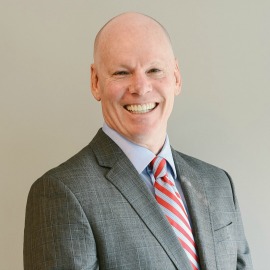What’s behind a successful approach to cloud?
That’s one of the questions 1901 Group LLC executives Paul Wilkinson and Sonu Singh tackled in a recent interview with WashingtonExec. The duo also addressed advantages and roadblocks of cloud computing, favorite technologies and the presence of Hokie nation in federal IT.
1901 Group is a IT solutions provider that delivers cybersecurity, cloud services and enterprise managed services for mission critical systems. Wilkinson serves as the company’s executive vice president of corporate strategy and business development while Singh is CEO.


WashingtonExec: How do we avoid making “cloud computing” a buzz term?
Wilkinson: For us, it’s about getting mission workloads to the cloud to really improve application performance, security and eventually functionality. We’re seeing a lot of questions about the benefits of cloud. There is clearly a lot of fear, uncertainty and doubt around security, compliance, scalability and costs. But what we’re seeing with our customers — who are making it more than a buzzword — is they’re migrating mission-critical workloads to the cloud, not simply doing development, test, proof of concepts — and they’re realizing actual benefits.
WashingtonExec: What are some of the biggest roadblocks you or your clients encounter with cloud migration?
Wilkinson: A roadblock is the business model and culture that permeate the federal IT marketplace. For the past 20 years, the federal IT market has predominantly been government-owned data centers, supported by a traditional labor delivery model, where the contractor deploys, for example, 40 or 50 people to the customer site and runs their operations in a traditional IT service delivery model.
With the cloud, what we’re seeing now is a wholesale shift from that model I just described where no longer are your servers, your networks, your storage and your applications sitting in your data center; they are spread among multiple cloud service providers and/or in a private cloud, so the environment is far more distributed, and the model and culture needs to change to support this kind of shift.
The other thing we see is budget being a big challenge. Budgets are tied up in running operations and maintenance of these traditional environments. Eighty-five to 90 percent of budgets are really just “keeping the lights on.” Customers are hard-pressed to find additional moneys to support that ongoing O&M while also figuring out how to do transformation or start that cloud journey. We’ve built the company around delivering managed services in a way that improves performance while reducing cost, so our approach is to try to drive down legacy spend on O&M to create money or make better use of funding to start moving to the cloud in a way that’s really cost-neutral.
I would also say that the cloud market is fragmented today in the choice of service providers that are available to the customer. You have systems integrators that have tremendous capabilities but have been built around a model that has largely been that type of on-site service delivery for a specific customer. They haven’t really built out cloud factory teams that have invested in FedRAMP authorization and invested in process automation with automated tools to be more efficient. There’s also the value-added reseller marketplace, where they’re great at reselling capabilities of cloud service providers and engineering services, but maybe don’t have the full set of capabilities to provide 24/7 managed services for workloads that are in the cloud.
WashingtonExec: You recently submitted a white paper on supporting law enforcement agencies through a hybrid cloud storage system. Can you provide some context to that case study?
Wilkinson: About three years ago, we had a law enforcement agency that was confronted with a situation where their infrastructure was aging, it wasn’t able to adequately serve the needs of the mission and they were confronted with decisions about where they were going to go in the future. Were they going to buckle down and do a large capital expenditure to recapitalize their government-owned data center, or were they going to seek cloud as a way to augment their capabilities at that point in time? We started down that process with them, and the first thing they looked at was disaster recovery.
Like many agencies, they really don’t want to jump right into the cloud with mission critical applications right away and just kind of “rip the Band-Aid off.” A strategy that we’ve developed is starting with disaster recovery first, getting that working effectively, getting the data, the underlying networking and security into a cloud-ready format, and making sure that DR works appropriately. Then, if that’s the case, then it’s easier to transition DR into production and then go from there.
Law enforcement agencies have stringent requirements around data and data sovereignty. Evidentiary data and law enforcement chain of custody is very important. To address the data requirement, the customer required a private cloud for storage that keeps that data integrity, the evidentiary chain of custody, coupled with a public cloud or gov cloud for compute, and that’s the hybrid cloud architecture: private cloud storage, public cloud compute, all secured at the FISMA high level. With this type of architecture in place, they can start a transformation to migrate mission applications to the cloud, and in doing so there are things that have to be done to refactor, re-host and re-platform legacy applications to operate in a cloud environment, so we’re doing that.
Fast-forward to now, and we’re moving our customers into more advanced uses of machine learning and improvement through open source and deploying a DevSecOps platform that allows them to more rapidly deploy features to their applications or new updates in a secure and automated way using continuous integration and continuous delivery. In cloud architectures, all these things become enabled more effectively.
WashingtonExec: What’s your favorite gadget or emerging tech you wish you could bring to work every day?
Wilkinson: We’ve done some R&D around the internet of things as a company and have written a grant application with Virginia Tech in the past. We’ve prototyped and completed a proof of concept using our In3Sight FedRAMP platform to automate the monitoring of IoT sensors and use predictive analytics to pinpoint performance problems, for use cases such as monitoring large industrial engineering plant and equipment. Next-generation things that we’re thinking about as a company is how to use our In3Sight platform that provides a data analytics framework that we’ve built and machine learning, to take to different markets that really haven’t been thought of historically in the past.
WashingtonExec: What else would you like to share about 1901 Group?
Wilkinson: When the company started back in 2009, we knew then the cloud was going be the next frontier. We built the company with that in mind. Sonu had the vision to set this out, and we were “swimming upstream” for the early years of the company with this vision of a centralized Enterprise IT Operations Center, FedRAMP authorization, a platform that improves automation, and a business model that enables the selling of IT as a service as opposed to selling labor hours.
That’s really where we’ve been going, and now four years in a row we’ve achieved our FedRAMP authorization, and we’re using our platform and our model to support our customers. We’ve seen things take off for the company as a whole, and it’s really the journey that we’re taking our customers on that’s most exciting for us today.
WashingtonExec: What are your favorite emerging tech capabilities from the private sector you, in an ideal world, would bring to the public sector marketplace?
Singh: Although I see a lot of applicability for artificial intelligence and machine learning in the federal space, I don’t think that just technology can solve some of the tougher federal IT issues. It has to be a combination of incentives and cultural change coupled with existing and new technology.
WashingtonExec: You are a proud Hokie. What is it about Hokie nation and its heavy representation in federal IT? Are you involved in a particular Virginia Tech alumni or workforce program?
Singh: Hokies are definitely well represented in federal IT and Hokie nation and Blacksburg are important parts of our business. I think Hokies are prominent because of three factors. First, Virginia Tech’s engineering and business programs are top notch and have large enrollments, so we produce a lot of highly trained engineers and business people. Second, Virginia Tech’s motto “Ut Prosim” means “that I may serve,” and federal IT is essentially a business of service to the entire population of the U.S. and beyond. Solving true mission issues in health care, national security, law enforcement, child welfare and others provides a high level of satisfaction. And third, proximity to D.C. D.C. is the largest metropolitan area closest to Blacksburg, so naturally a lot of graduates migrate to this area and enter or progress through a federal IT career path.

